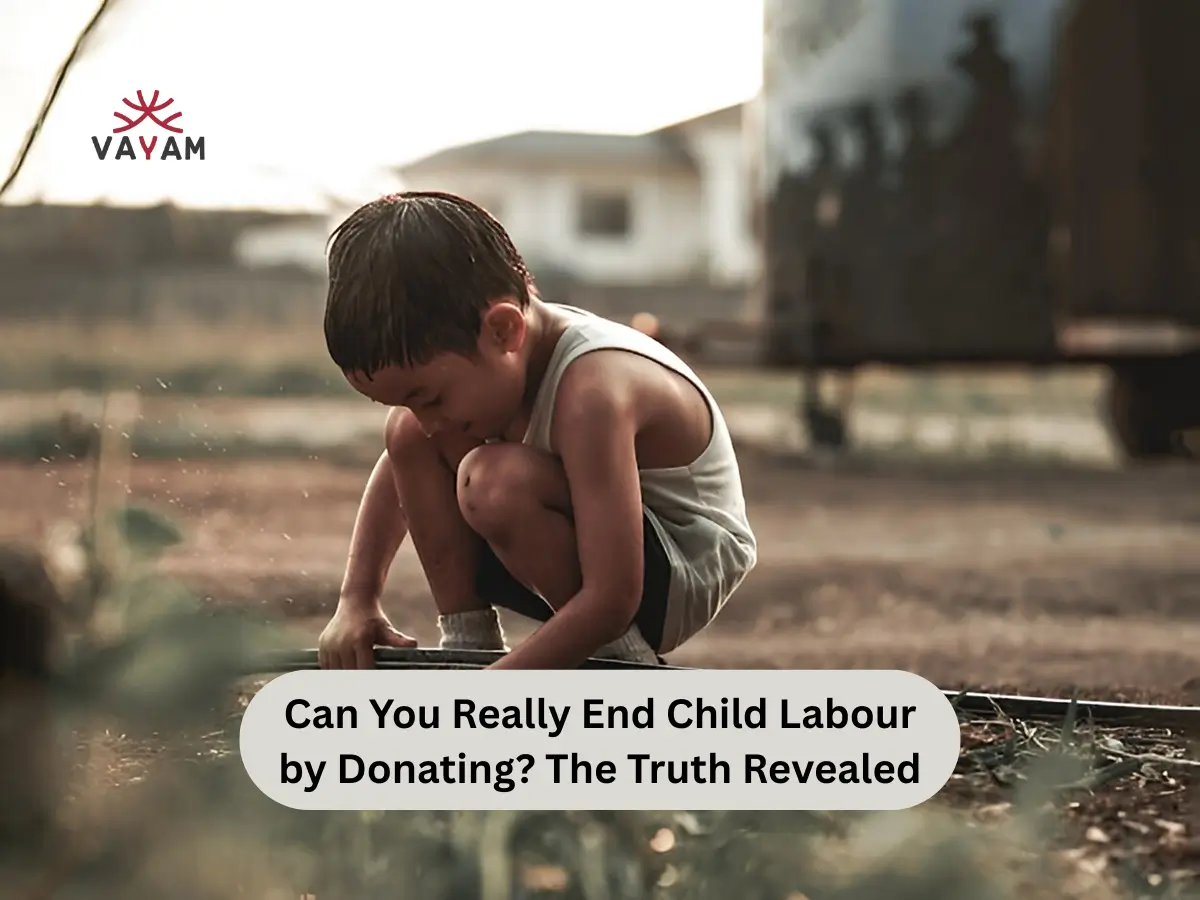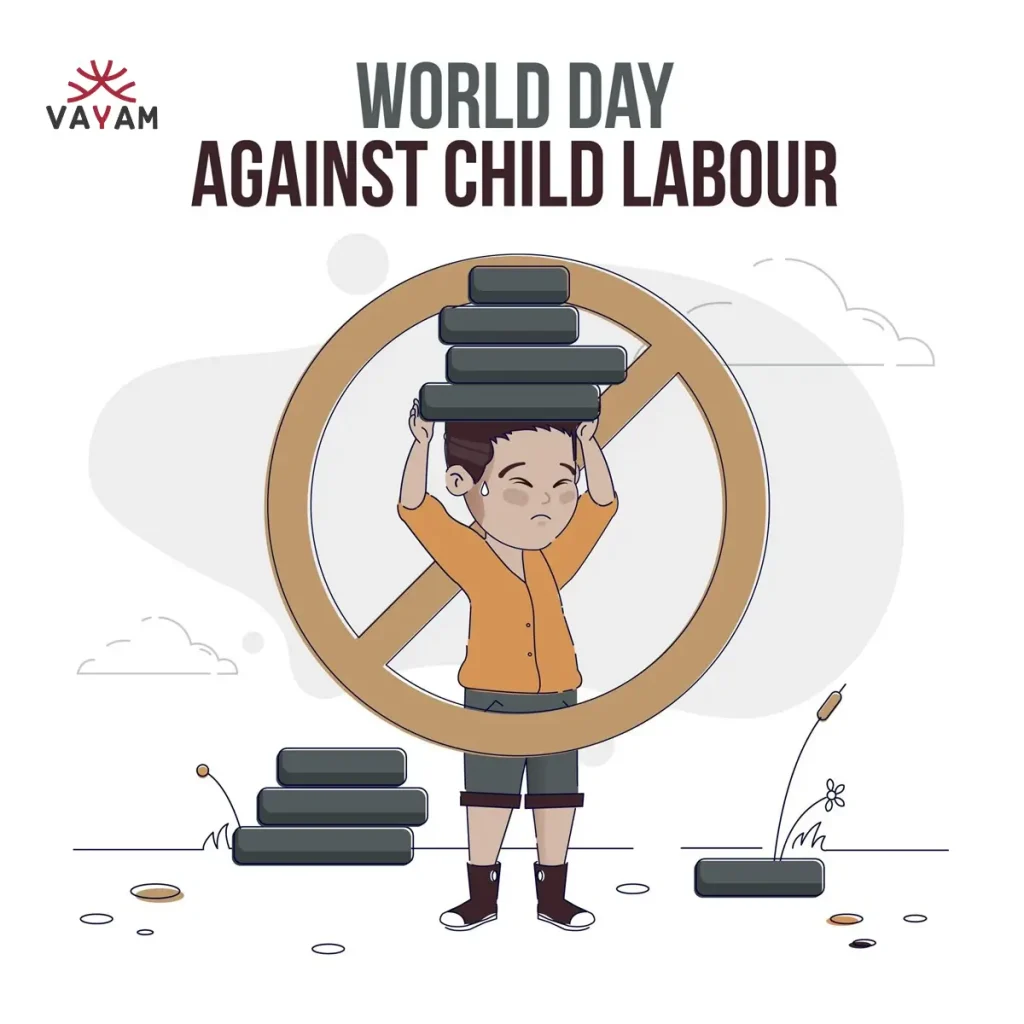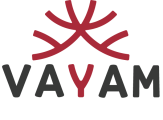
When we see images of children working in hazardous conditions rather than attending school or enjoying childhood, our first instinct is often to help. For many, this means making a donation to a charity fighting child labour. The intention is admirable, but a critical question remains: can financial contributions truly make a difference in ending this complex global issue?
This blog explores the nuanced reality behind donations and their impact on child labour. We’ll examine how your money is used, what works, what doesn’t, and how to ensure your contribution has the greatest possible effect.
The truth is both encouraging and sobering – while donations play a crucial role in combating child labour, the path to meaningful change is more complex than simply opening our wallets.
Understanding Child Labour
The Global Scope of Child Labour
According to the International Labour Organization (ILO), approximately 160 million children worldwide are engaged in child labour. That’s nearly one in ten children globally.
These children work in various sectors – from agriculture and mining to manufacturing and domestic service. Many face dangerous conditions daily, handling hazardous materials or operating dangerous machinery.
The COVID-19 pandemic has only worsened the situation, with economic pressures forcing more families to rely on their children’s income for survival.
Root Causes of Child Labour
To understand if donations can help, we must first recognize what drives child labour:
Poverty stands as the primary cause. When families struggle to meet basic needs, children often must work to contribute to household income.
Limited access to quality education creates a situation where working seems more beneficial than schooling, especially when educational facilities are distant, expensive, or of poor quality.
Weak enforcement of child labour laws in many regions means that even where protections exist on paper, children remain vulnerable in practice.
Cultural and societal norms in some communities view children’s work as a normal part of development rather than a rights violation.
Market demands for cheap products create economic incentives that often rely on exploitative labour practices, including child labour.
Understanding these interconnected causes reveals why simply donating money isn’t a complete solution – though it can be part of one.
The Donation Ecosystem
Types of Charitable Organizations
Donations to combat child labour typically flow through several types of organizations:
International NGOs like Save the Children, UNICEF, and World Vision operate large-scale programs across multiple countries.
Local grassroots organizations work directly within affected communities, often with deeper cultural understanding but fewer resources.
Government initiatives may accept donations to supplement public funding for anti-child labour programs.
Corporate social responsibility (CSR) programs run by businesses seeking to address child labour in their supply chains or communities where they operate.
Each type of organization approaches the problem differently, with various strengths and limitations.
How Donations Are Typically Used
When you donate to combat child labour, your money might fund:
Direct intervention programs that identify and remove children from dangerous working conditions.
Education initiatives providing scholarships, school supplies, and infrastructure to make education accessible.
Family support services offering financial assistance, skills training, and microcredit to parents so they can earn enough without relying on their children’s income.
Advocacy campaigns pushing for stronger laws, better enforcement, and increased public awareness.
Research and monitoring to track the prevalence of child labour and effectiveness of interventions.
The allocation of funds varies widely between organizations, with overhead costs ranging from under 10% to over 40% of donations.
Direct Impact of Donations
Success Stories
Despite the complexity of child labour, donations have helped achieve meaningful results:
In Bangladesh, a donation-funded program by the ILO removed over 90,000 children from hazardous work and placed them in educational programs over a five-year period.
The Fairtrade certification system, supported by consumer donations and purchases, has helped reduce child labour in cocoa production in West Africa by creating economic incentives for ethical practices.
In India, the MV Foundation used donations to develop a successful model that has transitioned over 1 million children from work to school through community mobilization techniques.
These success stories demonstrate that targeted, well-managed donation programs can make a significant difference.
Limitations of Donation-Based Solutions
However, donations alone face important limitations:
Sustainability challenges arise when funding dries up, potentially leaving children and families without continued support.
Addressing symptoms rather than causes occurs when programs focus on removing children from work without addressing the poverty driving the situation.
Unintended consequences can emerge when poorly designed interventions push child labour underground or create dependency on foreign aid.
Scale mismatch between the massive scope of global child labour and the resources available through donations means that only a fraction of affected children receive help.
These limitations don’t mean donations are ineffective – rather, they suggest that donations work best as part of a more comprehensive approach.
Beyond Donations: Systemic Solutions
Policy and Legal Frameworks
Lasting change requires strong policies and legal frameworks:
International agreements like ILO Convention No. 138 (minimum age) and No. 182 (worst forms of child labour) provide standards for national legislation.
National laws must not only prohibit child labour but also create comprehensive child protection systems.
Enforcement mechanisms need adequate funding, training, and anti-corruption measures to be effective.
Donations can support advocacy for better policies, but government commitment and public pressure are essential for implementation.
Economic Empowerment
Addressing poverty is fundamental to eliminating child labour:
Fair trade initiatives that ensure parents receive living wages can remove the financial necessity for children to work.
Community development programs that create local economic opportunities help entire communities rise above poverty.
Social protection systems including cash transfers, health insurance, and unemployment benefits provide safety nets that reduce reliance on child labour.
These economic solutions require coordination between governments, businesses, and civil society – with donations potentially accelerating progress.
Education as a Catalyst
Quality education serves as both prevention and remedy for child labour:
Free, accessible schooling removes financial barriers that keep children working instead of learning.
Relevant curriculum that prepares children for real economic opportunities makes education a more attractive investment for families.
Flexible education models accommodate children transitioning from work to school, recognizing their unique challenges.
Donations often focus on education – and for good reason. When properly implemented, educational initiatives offer some of the highest returns on investment for reducing child labour.

Read More
How MGNREGA is Driving Rural Prosperity?
How MGNREGA is encouraging water Harvesting Techniques
Smart Giving: Maximizing Your Impact
Researching Organizations
Not all donation opportunities are created equal. To maximize your impact:
Look for organizations with transparency about how funds are used, with detailed annual reports and financial statements.
Check for measurable outcomes rather than just activities – how many children have been permanently removed from labour? How many families have achieved sustainable livelihoods?
Seek organizations with community-based approaches that involve local stakeholders in program design and implementation.
Consider the organization’s overhead ratio, but don’t make it the only criterion – sometimes higher administrative costs enable more effective programs.
Tools like Charity Navigator, GiveWell, and the IRS Form 990 can help evaluate an organization’s efficiency and effectiveness.
Alternative Ways to Contribute
Financial donations aren’t the only way to make a difference:
Conscious consumerism involves purchasing products certified as child-labour-free, creating market demand for ethical production.
Corporate engagement through shareholder activism or consumer pressure can push companies to eliminate child labour from their supply chains.
Skills-based volunteering allows professionals to contribute expertise in areas like education, healthcare, or business development.
Advocacy at local and national levels can influence policies that address root causes of child labour.
These approaches complement financial donations, creating a multi-faceted response to a complex problem.
Frequently Asked Questions
How much of my donation actually reaches children in need?
This varies significantly between organizations. The most efficient charities typically spend 75-85% of donations on program activities directly benefiting children and families. However, some administrative and fundraising costs are necessary for effective operations. Rather than focusing solely on overhead percentages, look for transparency about how funds are used and evidence of positive outcomes.
Which countries have the highest rates of child labour?
Child labour is most prevalent in sub-Saharan Africa, where about 23.9% of children (ages 5-17) are engaged in child labour. The countries with the highest percentages include Mali, Burkina Faso, Somalia, and Niger. In absolute numbers, India has the largest child labour population, followed by Bangladesh, Pakistan, and Ethiopia. However, child labour exists in nearly every country, including developed nations.
What’s the difference between child work and child labour?
Not all work done by children is classified as child labour. The ILO distinguishes between “child work” – which may be age-appropriate, part-time, and non-harmful – and “child labour,” which interferes with education, harms development, or endangers children’s physical or mental health. For example, a teenager helping on the family farm after school might be doing acceptable child work, while a 10-year-old mining for minerals full-time would be suffering from exploitative child labour.
Are boycotts effective at ending child labour?
Boycotts have mixed results. While they can create pressure for change, poorly designed boycotts can actually harm the children they aim to help by eliminating family income without providing alternatives. More effective approaches include supporting certified fair trade products, engaging with companies to improve practices, and advocating for comprehensive solutions that address root causes while providing transitional support for affected families.
How long will it take to end child labour globally?
Despite significant progress in recent decades, ending all forms of child labour remains a long-term challenge. The ILO and UNICEF have set 2025 as a target date for eliminating the worst forms of child labour, with complete elimination targeted for 2030 as part of the Sustainable Development Goals. However, the COVID-19 pandemic has reversed some progress, and current rates of improvement suggest these targets may not be met without dramatically accelerated efforts.
Conclusion
Can you really end child labour by donating? The answer is nuanced: donations are valuable tools in the fight against child labour, but they aren’t silver bullets.
When directed to well-designed programs that address root causes and work within broader systemic changes, donations can make a meaningful difference in children’s lives. They can fund education, family support, and community development that create pathways out of exploitation.
However, lasting solutions require coordinated action beyond donations alone – including policy reform, economic development, and shifts in social norms and business practices.
As donors, our greatest impact comes from informed giving that supports comprehensive approaches. By understanding the complexities of child labour and carefully selecting where to contribute, we become part of a solution that doesn’t just rescue children temporarily but transforms the conditions that put them at risk in the first place.
Your donation might not end child labour globally, but it can change the trajectory of individual lives and communities – and when combined with broader systemic efforts, contribute to a world where all children can learn, play, and develop without the burden of exploitation.
The truth is that ending child labour requires not just our money, but our sustained attention, advocacy, and commitment to addressing the inequities that make it possible.
